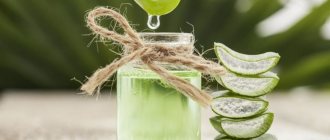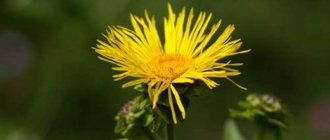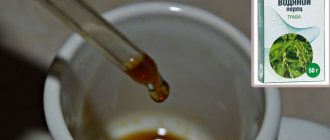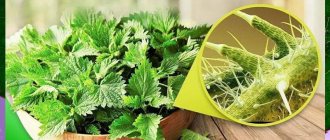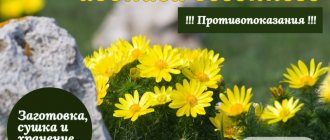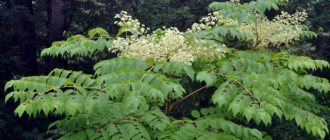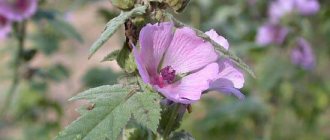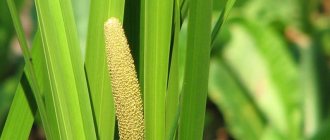General information
Chamomile (medicinal) is a very well-known and widespread plant in our latitudes.
This is an annual plant belonging to the genus Matricaria, the Asteraceae family, and is found in different regions of North America, Eurasia, and other extratropical regions. Translated from Latin, the name of the plant means “uterine grass.” The fact is that it was previously used mainly for the treatment of female diseases. Previously, chamomile grew mainly in the wild, but now this medicinal herb is actively cultivated. After all, chamomile flowers are a valuable medicinal raw material, in demand and used to treat many diseases. It is included in many drugs as an active ingredient, and is also widely used in cosmetology, as an ingredient in creams, soaps, shampoos, etc.
About products
As part of a comprehensive study, Roskachestvo experts analyzed the quality and safety of medicines, dietary supplements and chamomile tea from 25 brands.
Of these, the medicine “pharmaceutical chamomile” – 6 TM, biologically active food additive (BAA) – 8 TM, tea – 11 TM (of which two are for children). In 20 cases, the country of origin of the product was Russia. One product each from the Czech Republic, India, Sri Lanka, Azerbaijan and the UAE.
Products from 24 brands are packaged in filter bags; the net weight of chamomile in filter bags is from 1 to 2 g. The packages contain from 12 to 25 filter bags. The product of the Heritage of Nature trademark with a net weight of 50 g was packaged in a polymer bag and a cardboard box. The purchase price of the samples ranged from 40 to 288 rubles. per package.
The number of indicators for which chamomile was studied was 186. Of these, 145 were pesticides.
Russian quality system standard
• STO 46429990-117-2019 “Medicinal herbal preparation of chamomile flowers.”
• STO 46429990-118-2019 “Biologically active drug of chamomile flowers.”
• STO 46429990-119-2019 “Tea drink with chamomile flowers.”
These STOs set out the requirements for external and microscopic characteristics, introduced indicators for determining the main groups of biologically active substances, and established requirements for the amount of flavonoids; to the content of extractive substances extracted by water; to the number of particles passing through a 0.18 mm sieve and not passing through a 2 mm sieve; to the mass of the filter package. The indicator for the content of foreign impurities has been tightened; impurities are not allowed.
We remind you that the requirements of Roskachestvo standards are not mandatory. A manufacturer whose products comply with all necessary legal requirements, as well as the advanced requirements of Roskachestvo, has the right to apply for the assignment of the Russian Quality Mark to their products.
The level of production localization is at least 100%.
What is the difference between medicines, dietary supplements and chamomile teas?
The standards and regulatory documents for chamomile in medications, dietary supplements and tea drinks are different.
- Chamomile as the basis of the drug
is subject to the Federal Law “On the Circulation of Medicines”. The State Pharmacopoeia establishes requirements for chamomile as a medicinal herbal raw material (MPR). The requirements for the finished product are set by the manufacturer himself. Since the manufacturer himself chooses what the medicinal properties of his finished product are aimed at, it can differ in any way from the raw material. - for dietary supplements
are established by technical regulations. Dietary supplements belong to specialized food products and must meet the safety requirements established in the technical regulations of the Customs Union “On the safety of food products” (TR CU 021/2011), “Food products regarding their labeling” (TR CU 022/2011) and “On packaging safety” (TR TS 005/2011). - Tea drinks
must meet the safety requirements established in the technical regulations of the Customs Union “On the safety of food products” (TR CU 021/2011) and “Food products regarding their labeling” (TR CU 022/2011).
Naturally, the most stringent requirements apply to medicines.
Emma Khachaturova
Executive Director of the National Association of Distinguished Physicians
– Of course, medicines and dietary supplements must meet more stringent requirements than ordinary herbal teas, since they are related to human health and can cause more harm instead of benefit if the production, transportation, and storage requirements are not met. Therefore, before a herbal medicine can be approved, it is necessary to provide convincing evidence of its effectiveness over long-term use.
In addition, it is important that herbal preparations are subject to control of impurities and contaminants. The product must have a quality guarantee. The information should include basic information about the manufacturer, the composition and storage rules of the collection, its correct and safe use.
For information
Mandatory norms and requirements for the quality of medicinal plant raw materials are set out in various standards, collectively called “Regulatory Documentation” (ND). They are mandatory for all enterprises and institutions of the Russian Federation involved in the manufacture, storage, control and use of medicines. ND exists for each type of raw material and its commercial form (whole, cut, briquetted, etc.), as well as substances and dosage forms.
The main ND regulating the quality of medicinal plant raw materials currently in the Russian Federation are:
- State Pharmacopoeia. On December 1, 2021, the State Pharmacopoeia of the Russian Federation (SF RF) XIV edition came into force.
- Pharmacopoeial monographs for types of raw materials not included for certain reasons in the current pharmacopoeia.
- Temporary pharmacopoeial monographs for new types of drugs.
The turnover of dietary supplements is regulated by the following legal acts:
- TR CU 021/2011 “On food safety”.
- Resolution of the Chief State Sanitary Doctor of the Russian Federation dated April 17, 2003 No. 50, which put into effect the sanitary and epidemiological rules and regulations SanPiN 2.3.2.1290-03 “Hygienic requirements for the organization of production and circulation of biologically active food additives (BAA).”
- Resolution of the Chief State Sanitary Doctor of the Russian Federation dated August 15, 2003 No. 146 “On sanitary and epidemiological examination of dietary supplements.”
- Methodical guidelines MUK 2.3.2.721-98 2.3.2 “Food products and food additives. Determination of the safety and effectiveness of biologically active food additives."
The Decree of the Chief State Sanitary Doctor of the Russian Federation dated April 17, 2003 No. 50, in particular, states that retail trade in dietary supplements is carried out through pharmacies (pharmacies, pharmacy stores, pharmacy kiosks and others), specialized stores selling dietary products, food stores (special departments, sections, kiosks).
Important! Regulations for medicines and dietary supplements do not apply to chamomile teas. Tea must first of all comply with the requirements of TR CU 021/2011 “On the safety of food products.”
Description of the plant
On average, it grows to 20-40 cm. If the stem of a herbaceous plant is very long, then this is evidence of a lack of sunlight during the period when it was actively growing. The stem is erect, quite thin, hollow inside.
The structure of chamomile
The leaves are 2-5 cm long, they are located alternately on the stem. The narrow-linear leaf has dissections with sharp segments. The root is thin, taprooted, with virtually no branches. The flower baskets are small, with white petals around the edges and yellow flowers.
How does medicinal chamomile differ from its other varieties?
On the flower basket of the medicinal variety, the petals are either arranged horizontally or lowered to the bottom. The shape of the receptacle is conical, convex. The flower has a hollow head.
Not all chamomile is suitable for infusions and teas
There are many varieties of chamomile: meadow chamomile, medicinal chamomile, tongueless chamomile, dog chamomile, Roman chamomile, field chamomile, etc.
But as a raw material for different types of chamomile products, either Roman or pharmaceutical chamomile is used.
- Roman/scented chamomile is large and beautiful, with a distinct aroma. It is usually used for teas. It has less bitterness, fewer polyphenolic compounds and, accordingly, fewer nutrients.
- If chamomile is used for treatment, then the main raw material is chamomile, with small inflorescences. Its flower is inconspicuous, with small white petals, but contains healthy components in large quantities.
Chemical composition
The flowers contain the following chemicals:
- derivatives of the bioflavonoids apigenin , quercetin and luteolin ;
- coumarins ( umbelliferone , herniorin );
- unbound organic acids - salicylic , isovaleric , anthemisic , caprylic ;
- polysaccharides;
- phytosterols;
- vitamins ( nicotinic acid , ascorbic acid );
- tannins;
- protein substances;
- carotene;
- mucus, gum, bitterness.
Dry baskets contain from 0.1 to 0.8% essential oil, it is called chamomile. This oil is bluish in color and contains many components. The most valuable of them is azulene chamazulene (in oil it is approximately 1-9%). Chamazulene is synthesized by steam distillation of the raw material from the lactones matrixin and matricarine. Produces a pronounced anti-inflammatory, anti-allergenic, bacteriostatic effect.
About half of the oil’s composition is a number of other sesquiterpenoids: bisabolol , farnesene , etc.
What's inside: flowers or stems with leaves?
The most valuable part of a chamomile is the flower. The stems and leaves contain much less useful substances than the flower. But manually collecting chamomile inflorescences is time-consuming, tedious and unprofitable. And with a combine, naturally, part of the stem is cut off along with the head. How many chamomile flowers are in the package and is there any chamomile in it at all?
Investigations of the contents of packages of medications, dietary supplements and teas were carried out based on external and microscopic signs.
According to FS.2.5.0037.15 “Chamomile flowers”, the external signs of high-quality chamomile are as follows:
- A mixture of crushed flower particles of various shapes, passing through a sieve with holes with a diameter of 2 mm.
- Color – brownish-yellow with white, yellowish-white, greenish-gray and brown inclusions.
- The smell is aromatic.
- The taste of the aqueous extract is spicy, bitter, with a mucous sensation.
- Medicines from three of the six brands did not fully meet the requirements - fragments of stems and leaves were found in them, that is, a significant amount of the mixture is not flowers.
Also, fragments of stems and leaves were found in five out of eight dietary supplements and seven out of eleven teas (including tea for children).
Experts noted the smell and taste typical for such mixes: the smell is usually weak, uncharacteristic of chamomile, has little or no aroma, and the taste of the infusion is poorly saturated.
Chamomile flowers without leaves and stems were found in only ten of the 25 products studied.
- For almost all products, the mixture is crushed, and properly crushed, according to FS.2.5.0037.15: no more than 5% of the mixture consists of large particles that do not pass through a sieve with holes with a diameter of 2 mm, as well as very small particles that pass through a sieve with holes diameter 0.18 mm.
Why is this particular degree of grinding set for chamomile? Particles that are too large do not fully release beneficial substances into the water. In addition, the brewing time will be longer and the water temperature will be higher. If chamomile is literally crushed into dust, valuable essential oils quickly disappear from it.
Unground chamomile flowers (whole raw materials) were found only in tea.
However, flowers in the composition or flowers with stems are not as important as whether the raw materials are fresh enough. If the flowers have been cut a long time ago, the content of beneficial essential oils and flavonoids decreases sharply.
Emma Khachaturova
Executive Director of the National Association of Distinguished Physicians
– Typically, the shelf life of chamomile does not exceed two years. But this depends on the storage conditions, packaging and degree of grinding of the raw materials: the smaller the particles, the more the essential oil glands are damaged and the more the essential oil evaporates. The more carefully and hermetically sealed the dry raw materials are packaged, the longer the essential oil lasts.
How much benefit is chamomile tea and chamomile from the pharmacy?
Chamomile has rightfully won its place among the most useful and recognizable medicinal plants: it helps solve many health problems, is suitable for all ages, and is hypoallergenic.
“It is no coincidence that the most valuable type of this plant is called “pharmacy chamomile,” says Emma Valeryevna Khachaturova. – Chamomile decoctions and infusions have anti-inflammatory, soothing and restorative properties. Most often they are used for problems with the gastrointestinal tract - constipation, excess gas formation, gastritis, gastric and duodenal ulcers, colic in infants.
Many people drink chamomile tea, being confident that this drink will reduce the risk of gastritis, stomach ulcers, liver and kidney diseases, relieve skin problems, etc. After all, doctors often recommend chamomile infusion along with basic medications for such ailments. Details HERE.
Unfortunately, most people still do not see the difference between chamomile, chamomile tea and dietary supplements.
People are also confused by the fact that chamomile tea can be bought both at the pharmacy and in the store. It is important to know that if you need to use an herbal mixture for treatment, the packaging must say “Medicine”. Only it theoretically contains sufficient quantities of beneficial esters and flavonoids.
Important
Buyers should read label directions and buy what they really need. There is no need to try to drink chamomile-based medicine as tea; it can only be drunk as prescribed by a doctor.
To find out whether there really is a difference in the content of useful substances in the medicine, dietary supplements and tea, experts examined purchased product samples for the presence and quantity of essential oils, flavonoids and extractives. Differences in composition have been identified between chamomile sold in pharmacies and chamomile tea sold in grocery stores.
Extractives
According to FS.2.5.0037.15, the content of extractive substances extracted with water must be at least 18%. Absolutely all products passed this test perfectly - the content of extractive substances varies from 21 to 44%.
Essential oils
Raw materials for medicines must contain at least 0.3% essential oils, according to FS.2.5.0037.15. The advanced requirements of Roskachestvo extend this indicator to the medicines themselves. For dietary supplements, the advanced requirements of Roskachestvo set a level of at least 0.1%. The content of essential oils in tea is not standardized.
- Among the medicines, only two and “ST.-Medifarm” (up to 0.35%) are in order for this indicator. The indicator is below the norm for goods 4 TM: from 0.05 to 0.1% instead of 0.3%. This level would be more suitable for teas than for medicines.
- Among dietary supplements, the products of three out of eight brands do not reach their standard of 0.1%. For others, the content of essential oils varies from 0.1 to 0.35%.
- Among the 11 teas, seven have a very low content of essential oils, literally in hundredths of a percent: from 0.02 to 0.09%.
Important
Although the content of essential oils in teas is not standardized, it was tea, and not a drug or dietary supplement, that became the leader among the studied products in terms of the content of essential oils. This is “Simply Azbuka” tea (0.54%).
Flavonoids
Flavonoids in terms of rutin in chamomile (in raw materials) should be at least 1.2%, according to FS.2.5.0037.15. This minimum is also established by the advanced requirements of Roskachestvo for chamomile products. All drugs meet the required minimum level of flavonoids. The content of flavonoids in two dietary supplements and three teas is below this level.
The maximum flavonoids among the products studied are in the Indian tea drink Newby (2%). At the same time, the content of essential oils in this product is quite low - 0.09%.
What does the situation mean when there are a lot of flavonoids and few essential oils, and vice versa?
Elena Malankina
Professor of the Department of Botany RGAU-MSHA named after. K. A. Timiryazeva, Ph.D. Sc., D.S. Sc., author of popular books on medicinal and essential oil crop production
– Naturally, the high content of both essential oil and flavonoids indicates the high quality of the raw materials. The ratio of these compounds depends on a number of factors: variety, weather conditions, fertilizers used. For example, if the essential oil content is low, this may indicate that the weather was wet and cool or that the plants were heavily fed with nitrogen fertilizers. The content of flavonoids is more stable over the years and reacts less to weather conditions. The same is true during storage: flavonoids are very stable and retain very well in raw materials. But essential oils are less persistent. Their safety depends on the degree of grinding of the raw materials. The finer it is, the faster the essential oils evaporate, the shorter the shelf life. Also, essential oils evaporate if stored improperly (in the light, in heat).
Medicinal properties of chamomile
The fact that this plant has pronounced medicinal properties was known back in ancient times. Hippocrates and Dioscorides also used it to relieve cramps and eliminate pain. Avicenna believed that this plant was an excellent tonic. But Pliny the Elder used chamomile as an antidote if a person was bitten by a snake, and its decoction is used as a diuretic.
Currently, both dried flowers (for preparing decoctions and infusions) and essential oils are widely used in medicine.
Chamomile flowers, medicinal properties
- anti-inflammatory;
- disinfectant;
- painkiller;
- choleretic;
- sedative;
- antispasmodic;
- anticonvulsant;
- astringent (weak);
- antiallergic;
- carminative;
- hemostatic.
Healing properties of essential oil
- disinfects;
- provides a diaphoretic effect;
- reduces gas formation;
- activates the digestion process, improves gastrointestinal functions;
- reduces the severity of pain, including migraines ;
- reduces the intensity of inflammatory processes;
- stimulates the central nervous system, while reducing tension, reduces the manifestations of depression ;
- has an antibacterial effect;
- dilates the vessels through which blood enters the brain;
- eliminates spasm of smooth muscles.
The beneficial properties of medicinal chamomile have been proven by scientists from different countries in the process of conducting research. A special study was carried out, during which scientists from the UK determined that chamomile is able to relax blood vessels, as well as smooth muscles. And American researchers have confirmed that the product from the plant produces an anti-anxiety and antidepressant effect. In addition, scientists have proven that the stem, leaves and flowers of the plant have radioprotective properties.
Other studies were also conducted, during which scientists obtained evidence of the healing properties of this plant. The benefits of chamomile and what diseases it is used for will be discussed below.
Indications for use
In medicine, the following indications for the use of chamomile are defined:
- inflammatory skin diseases, including burns, purulent wounds;
- gallbladder disease;
- stomach diseases, chronic and acute, in which inflammatory processes of the mucous membrane develop ( gastropathy );
- diseases of the respiratory system, which cause coughing , bronchospasm, swelling of the mucous membranes of the respiratory tract;
- inflammatory processes of the mucous membranes;
- inflammation of internal organs, in particular the genitourinary system;
- gastritis of an allergic nature, bronchial asthma , eczema and other diseases that develop as a result of increased sensitivity of the body;
- connective tissue damage;
- insomnia;
- pain, including toothache and migraine .
Treatment with chamomile can last up to three months; habituation to chamomile preparations and allergic manifestations when using them, as a rule, are not observed.
Does it heal or cripple? About harmful substances and safe dosage
To find out how safe the studied products are for the body, experts tested the products for the content of pesticides, heavy metals, and radionuclides, which chamomile is capable of accumulating during the process of growth and maturation; aerobic microorganisms; yeast and mold fungi; bacteria of the genus Salmonella; coliform bacteria (coliforms and E. Coli); Staphylococcus aureus S. aureus; wax bacilli - soil bacteria Bacillus cereus.
Growing, harvesting, drying, storage, transportation, packaging - at each stage of production, the above substances and bacteria can get into the raw materials.
- In products of five brands - four dietary supplements (Altai, GreenSide, PharmGroup, Heritage of Nature) and one tea (Vitacenter) - molds were found in quantities exceeding the standards established by TR CU 021/2011, according to which molds are allowed no more than 103 CFU/g.
In addition to molds, aerobic microorganisms were identified in dietary supplements in quantities exceeding the maximum permissible level (MAL) of 5×105 CFU/g, established by TR CU 021/2011.
Attention! A slight excess of the maximum permissible limit (established by the advanced requirements of Roskachestvo 5 × 103 CFU/g) was recorded in Fleur Alpine children's tea, the content of aerobic organisms in which is 3 × 104 CFU/g.
The rating of these products has been lowered.
How can molds and aerobic microorganisms appear in a product? Why are they dangerous?
Elena Malankina
Professor of the Department of Botany RGAU-MSHA named after. K. A. Timiryazeva, Ph.D. Sc., D.S. Sc., author of popular books on medicinal and essential oil crop production
– Raw chamomile in various packaging (filter bags, cardboard boxes) can be classified as non-sterile medicines that can contain live microorganisms. The quantity and qualitative composition of these microorganisms depend on the type and purpose of the product and are standardized by appropriate documentation. As for the appearance of microorganisms in the product, they can enter from the soil, irrigation water, during harvesting, drying and packaging.
But the presence of mold is not allowed. Molds can produce mycotoxins, particularly aflatoxins and ochratoxins. Their appearance in medicinal plant raw materials is due to a long drying period and a long stay of the raw materials in a wet state at temperatures comfortable for the development of mold fungi. Mycotoxins are not destroyed during processing and can accumulate in the human body. This can be prevented by quick drying in a dryer with good air exchange and subsequent storage in a dry and frost-free warehouse.
- An analysis conducted as part of the study for 145 common pesticides, including chlorine-containing ones (HCCH and its isomers, DDT and its metabolites, HCB, Aldrin, heptachlor and others), showed that neither in drugs, nor in dietary supplements, nor in chamomile teas the desired pesticides were not found, even in trace amounts.
Let us remind you that Roskachestvo checks products made from plant raw materials for the presence of pesticides on behalf of the Government of the Russian Federation.
For information
Pesticides are chemical or biological preparations used to control plant pests and diseases, weeds, pests of stored agricultural products, household pests and external parasites of animals, as well as to regulate plant growth, pre-harvest removal of leaves (defoliants), pre-harvest drying of plants (desiccants) ). (From GPM.1.5.3.0011.15 “Determination of the content of residual pesticides in medicinal plant materials and medicinal herbal preparations.”)
- As for other safety indicators, in general, all tested products are safe, the content of heavy metals and radionuclides does not exceed the maximum permissible limit, and no dangerous microorganisms were detected.
The use of chamomile and medicines based on it
Since the medicinal properties of chamomile are very diverse, it is used for various diseases and conditions. Chamomile flowers, the medicinal properties of which are described above, are used in the form of infusions, decoctions, etc.
Their use internally is indicated in the following cases:
- for diseases of the digestive system - gastritis , colitis , enteritis , as well as bile ducts;
- for flatulence , stomach cramps, liver diseases;
- high body temperature;
- inflammatory processes of the respiratory system, ENT organs;
- uterine bleeding, metrorrhagia after childbirth;
- period pain;
- malaria;
- respiratory infections;
- severe fatigue;
- high excitability, insomnia ;
- loss of appetite.
The use of chamomile infusion externally is practiced:
- as a rinse for diseases of the oral cavity ( stomatitis , periodontal disease , gingivitis , inflammation of the gums), for toothache , sore throat ;
- as a lotion or compress for eczema , abscesses, ulcers, rashes, frostbite, burns, wounds that are difficult to heal;
- as microenemas for hemorrhoids ;
- for wiping with heavy sweating of feet and hands;
- for washing during inflammatory processes of the eye mucosa;
- as a means for wiping and washing for pimples and acne;
- as a poultice for bruises, gout , arthritis , rheumatism .
Features of using complex products with chamomile
In most cases of therapeutic and cosmetological use of chamomile, complex preparations can be used, which in addition to chamomile also include other components. Instructions for using each of them will depend on the composition, recipe and purpose of using such a product.
In all cases of using such complex products, it is necessary to take into account both the expected therapeutic effect of each component, as well as possible contraindications, side effects and limitations caused by each additional ingredient.
For example, in a separate article we provided instructions for using Tibetan balm based on chamomile, immortelle, birch buds and St. John's wort...
Pharmaceutical chamomile, instructions for use
If you purchase chamomile flowers at a pharmacy, the instructions for use will contain recommendations on exactly how to prepare the herb in the form of a decoction or infusion.
Decoction
For the decoction you need to take 4 tbsp. l. flowers and pour 300 ml of boiling water over them. Keep in a water bath for half an hour, then cool and strain, squeezing. Drink 3 times a day after meals. You should add honey to the chamomile decoction.
Infusion
You need to take 4 tbsp. l. flowers, pour them into a thermos and pour 200 ml. boiling water Leave for 3 hours. You need to drink 4 times a day in equal portions.
The decoction and infusion are stored in the refrigerator for no more than 2 days.
Soothing tea
To prepare a tea that has a calming and carminative effect, use the following ingredients: chamomile (3 parts), caraway seeds (5 parts), valerian root (2 parts).
After mixing the ingredients, take two tablespoons of the mixture and pour two tbsp. boiling water After 20 minutes of infusion, strain. Drink 100 ml in the evening and in the morning.
Tea for weight loss
1 tsp. flowers need to be filled with 200 ml of water and left for 10 minutes. Throughout the day you need to drink 4-5 glasses of tea. The course should not last more than two weeks.
Baths
To prepare baths, take the entire above-ground part of the plant. For one bath you need 500 g of such raw material, pour 2 liters of water and boil for 10 minutes. Strain the broth and pour into the bath. Such baths are taken for two weeks, every other day. The procedure lasts 30 minutes. They are recommended for the following diseases and conditions:
- skin diseases - ulcers , wounds;
- increased nervousness, poor sleep;
- peeling and dry skin;
- cramps of the calf muscles;
- liver diseases;
- cracked heels;
- consequences of x-ray exposure;
- severe leg fatigue.
Cream
To prepare such a product, you need to melt 50 g of not too fatty butter and 3 tbsp in a water bath. l. vegetable oil. Add 1 tsp. glycerin , 2 yolks, 30 ml camphor alcohol, 50 ml chamomile infusion, 2 tbsp. l. honey After thorough mixing, everything needs to be poured into a glass container. This self-prepared product can be stored for up to six months in the refrigerator.
Chamomile cream should be used in the following cases:
- with severe dry skin;
- when peeling skin or cracks appear;
- in case of laxity of the skin and turgor;
- with redness and irritation.
Douching
To prepare the solution, 1 tsp. flowers need to be poured with 200 ml of boiling water and left for half an hour. The strained solution is taken into a syringe and vaginal douching is done at night. They need to be done every day for a week. Douching is done slowly. This procedure is indicated in the following cases:
- inflammatory processes, however, not during exacerbations;
- cystitis;
- thrush;
- cervical erosion;
- vaginosis , nonspecific and specific.
Such procedures are contraindicated in the following cases:
- after the age of 40, since at this age the moisture of the mucous membranes decreases, and douching can aggravate the situation;
- during pregnancy ;
- during acute inflammatory processes;
- in the first month after childbirth , gynecological interventions, miscarriage .
Tampons
In the process of treating cervical erosion, tampons with chamomile are used. To prepare an infusion for soaking a tampon, you need to take 20 g of flowers and add 1 liter of water, then leave in a thermos for a day. Next, you need to take aloe leaves that have been in the refrigerator for 2 days, grind them into a paste and squeeze them out. Mix these ingredients in equal proportions. Dip a hygienic tampon into the prepared solution and place it in the vagina overnight.
Contraindications for use are similar to contraindications for douching.
Chamomile for weight loss
Chamomile can keep your appetite under control and even reduce it slightly. This is due to the fact that the plant regulates blood sugar levels. It also normalizes the functioning of the digestive organs and removes toxins from the body, which is also very important when losing weight.
To reduce body weight, you can drink simple chamomile tea. But nutritionists advise combining chamomile with other healing ingredients.
For example, chamomile along with lemon juice is great for weight loss. To prepare, pour a tablespoon of inflorescences into half a liter of water, place in a water bath for half an hour, then filter and add juice squeezed from half a lemon to the drink.
Drink a glass of the finished product twice a day.
You can also lose extra pounds using chamomile in combination with mint and honey. Brew 2 tablespoons of dried flowers with 400 ml of hot water, place on the stove and cook for 5 minutes. Then add 4 mint leaves to the resulting decoction, leave to infuse for a couple of hours, then filter and add a teaspoon of honey.
Take the drink throughout the day, dividing it in half
Use for cosmetic purposes
For freckles
Chamomile can help get rid of freckles and whiten your facial skin. To do this, you need to take 20 g of flowers and pour 500 ml of boiling water over them. After a while, strain, add the juice of 2 lemons and half a liter of yogurt to the liquid. All this needs to be mixed well. Soak gauze pads with the resulting solution and place them on those areas of the skin where there are a lot of freckles and keep them there for one hour. Then you need to rinse off the product with cool water and apply a rich cream to your face. These masks are made three times a week.
When the face is red
To reduce the severity of redness and irritation of the skin, prepare the following remedy. One tbsp. l. chamomile flowers need to be poured with a glass of boiling water. After steeping for an hour, strain and add 1 tbsp. l honey. Soak gauze pads in the solution and apply to the skin. Keep for half an hour. When the napkin dries out, replace it with a damp one.
For acne
To reduce the severity of the rash, take 2 tbsp. l. chamomile flowers and 1 tbsp. l. dry celandine and pour 1 liter of boiling water into this mixture. After the product has been infused for half a day, it is filtered and used to wipe those areas where acne constantly appears. This must be done at least 5 times a day.
For brittle and dry hair
You need to pour 4 tbsp. l. chamomile 0.5 liters of boiling water. After half an hour, strain. Add the egg yolk and apply the solution to your hair, spreading it carefully over the entire length. After half an hour, you need to rinse your hair thoroughly. This procedure is carried out 2-3 times a week. for a month. Interestingly, if blondes use this solution, their hair will become lighter and gain shine.
Brewing Recommendations
It is important to know how to brew chamomile tea correctly. The first thing you need to do is purchase a plant. It can be found in loose form or in bags. The latter option is more convenient to use, since the product is already dosed. The benefits of bulk or bagged options are the same, so you can rely on your own convenience.
The brewing algorithm involves the following stages:
- One sachet is enough for a glass of boiling water. If you use loose chamomile tea, add one spoon to a glass of water.
- Next, chamomile is poured with boiling water.
- Now you need to cover the glass with a saucer.
- Infusion continues for 5-10 minutes.
- Now you can remove the bag or strain the broth through a sieve.
- All that remains is to enjoy a pleasant drink.
If desired, you can add mint or lemon balm to the chamomile drink. This will improve the taste and enhance the beneficial properties. You can also add a slice of lemon or a little honey. This drink is consumed to calm down after a stressful situation, to relieve tension and normalize sleep.
What to brew the drink in? You can brew chamomile tea in any container. But the most suitable ones are a teapot, a glass glass and a ceramic mug.
Chamomile oil
This remedy is also used for various purposes.
For aromatherapy
Since this oil does not have a very pungent and intolerable odor, it is well received by both children and the elderly. This oil effectively disinfects the air and has a positive effect on the body as a whole. However, some people note that this oil has a bitter taste. To ensure a positive effect, a few drops of oil are added to the aroma lamp and such a session is carried out for about 20 minutes in the evenings.
Oral use
The oil is used internally along with honey - one tsp. honey - 2 drops. Drink morning and evening, course - one week. This remedy has a positive effect on the body in case of problems with immunity , poor appetite, gastritis, ulcers (except for periods of exacerbation). It is also indicated to be taken for menstrual irregularities, during menopause .
The product helps reduce irritability and restore normal emotional background. Its use also has a positive effect on mental activity. However, you should know that expectant mothers, women during lactation, and children under six years of age should not take the oil orally.
External use
If necessary, the oil can be applied to the skin without first diluting it. But it should be applied pointwise: apply a cotton pad with oil to the problem area for several minutes. This use of oil is practiced for the following conditions and diseases:
- diseases associated with an allergic reaction - dermatitis , eczema ;
- inflammatory processes due to sun or thermal burns - during the healing period;
- after insect bites;
- ulcers, poorly healing wounds;
- acne , blackheads ;
- small wrinkles;
- ingrown toenail – after surgery;
- alopecia , dandruff – rubbed into hair roots;
- rosacea.
For these problems, use chamomile oil for up to 10 days. Essential oil can also be added to any cosmetic product used - lotion, cream, etc. To correctly calculate the proportion, you need to add 3 drops of oil per 5 ml of cream or lotion.
You can also use it during a massage, mixing it with a base oil - for example, olive oil. For 10 ml of base, take 5 drops. essential oil.
To scent a bath, just add 10 drops. oils
Chamomile oil can also be combined with other oils, as chamomile enhances their effectiveness. These are oils of orange, lavender, geranium, sage, bergamot, marjoram, etc.
Chamomile for children
When using chamomile flowers for children, their medicinal properties and contraindications must be taken into account.
Pharmacy chamomile is used as tea for children after 1 year. For small children, you need to dilute the tea with water or buy special children's tea.
But externally, the herb and chamomile flowers are used even earlier, even before the baby turns one year old. However, the concentration of the decoction should be low.
Parents of small children should consult with their pediatrician on how to properly use chamomile flowers. The beneficial properties and contraindications for its use should be especially carefully considered by parents of infants.
How to drink chamomile in bags
The drink should be consumed 40-60 minutes after meals. It is useful to drink tea at night before bed, as it has a slight sedative effect. The daily dose should not exceed 4 cups (4 sachets).
To obtain a better effect for various diseases, you can add other medicinal herbs (lemon balm, mint, St. John's wort, currants) to tea, but only according to indications. Chamomile in powder form can be used externally.
The dosage and frequency of use are determined by the doctor individually for each patient.
Contraindications
Despite the fact that many consider this plant to be absolutely harmless, contraindications for chamomile still exist. First of all, it is important to take into account the contraindications for women - chamomile is contraindicated for pregnant women, and nursing mothers should drink it with caution. People suffering from chronic diseases, as well as those taking vital medications, should consult a doctor before using decoctions, infusions or oils. It is also not used in case of individual intolerance.
Warnings and contraindications
The instructions for use of all chamomile preparations indicate possible contraindications, side effects and restrictions for their use. For example, the photo below shows instructions for using the drug Rotokan:
In particular, no chamomile preparations should be taken orally:
- During pregnancy;
- Children under 3 years old;
- If you have a clear allergy to chamomile;
- For diarrhea.
Chamomile alcohol tincture should not be taken for inflammatory diseases of the gastrointestinal tract (gastritis, enteritis, duodentitis).
Peptic ulcer, for which sometimes chamomile may be indicated, but sometimes it should not be taken.
Topical chamomile preparations should not be used if you are allergic to chamomile or plants of the Asteraceae family. Moreover, for children in the first year of life, before using chamomile for the first time, it is useful to conduct a simple skin allergy test, which is available even at home. It needs to be done even if you plan to simply wipe the skin with chamomile.
Douching with chamomile for vaginitis, cystitis or candidiasis is generally considered dangerous and harmful procedures and is not recommended in any cases. Their positive effect has not been proven, and dangerous consequences (from ectopic pregnancy to cancer) develop quite often.
If any unwanted side effects occur while taking chamomile, you should stop using it and consult a doctor.
How to prepare and store
Flowers are collected in summer, doing this in dry weather. The highest concentration of essential oil in chamomile is observed from June to August. For external use, the entire plant is used; therefore, for this purpose, the raw materials are prepared in this way.
You need to dry the grass in the shade, while ventilating the room well.
When using a dryer, the temperature should not be higher than 40 degrees. During the drying process, the plant is not turned over to prevent the petals from falling off.
Store dried raw materials in paper or fabric bags in a dry and dark place. Used throughout the year. Since chamomile has a strong odor, it should not be stored near foods that could absorb the scent.
Is there any harm from chamomile infusion?
In some cases, chamomile tea can be harmful. Chamomile in particular has uterine stimulating properties. That is why during pregnancy such a drink is taboo. This can provoke a threat of miscarriage and worsen the course of the pregnancy as a whole.
During breastfeeding, chamomile tea is not considered taboo. However, it is recommended to consult a gynecologist and pediatrician. This will eliminate the possibility of negative effects on the woman’s body and the child.
Chamomile has the property of thinning the blood. That is why, if you are planning a surgical or dental operation, you must stop drinking the drink. Also, you should not take chamomile when taking any medications, since the plant leads to an increase in the effect of these pharmaceutical drugs, which is not always beneficial.
Chamomile drink is an amazing tea that is famous for its numerous beneficial properties. If you use it wisely, it will bring exceptional benefits to the body. Enjoy your tea!
